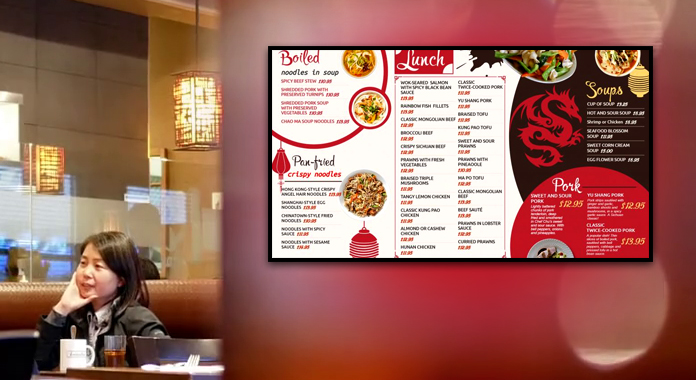
American Chinese foods has its origins from the southern province of Guangdong. The Toisan district,which is placed within the southern province had many immigrants to the US. These Chinese families developed new styles with readily available ingredients, specially in California. However, the types of American Chinese cooked in restaurants were very different from the Chinese cooking made at their homes. Of the various regional cuisines in China, it is the Cantonese style that has been the most influential in the development of American Chinese, overriding the Schezwan and Hunan styles.
Though American tastes still dictate the content of most Chinese menus, it has evolved and has become more varied since the new immigration began. The advent of ‘Mongolian Barbeque’ allows customers to choose their meats and ingredients and cook them ( or have them cooked ) on special grills right at their tables. The restaurants also offer dishes that are steamed instead of fried in oil, keeping in view the American health concerns.
American Chinese Restaurants & Menu
There are 41,000 Chinese restaurants in the US, which bring in $17 billion in annual sales. Further, on an yearly analysis it has transpired that 29.6 million households have visited a Chinese restaurant in 2017 (source: statista.com). These stats speak for themselves.
What makes Chinese food so popular ?
Chinese food consists of the five basic flavors ie, Sweet, Sour, Salty, Bitter and Spicy. Therefore, Chinese food is palatable for all, regardless of ethnicity.
Dishes that often appear on American Chinese restaurant menus include:
Almond Chicken - chicken breaded in batter containing ground almonds, fried and served with almonds and onions.
General Tso’s chicken - chunks of chicken that are dipped in batter, deep-fried and seasoned with ginger, garlic, sesame oil, scallions and hot chilli peppers. Believed to be named after Quing Dynasty statesman and military leader Zuo Zongtang, often referred to as General Tso.
Sesame Chicken - boned, battered and deep fried chicken which is then dressed with a translucent red or orange,sweet and mildly spicy sauce made from soy sauce, corn starch, vinegar, chicken broth, and sugar.
Chinese Chicken salad - usually contains sliced or shreded chicken, uncooked leafy greens, crispy noodles, and sesame dressing. Some restaurants served the salad with manderine oranges.
Chop suey - connots ‘ assoted pieces in Chinese. It is usually a mix of vegetables and meat in brown sauce but can also be served in a white sauce.
Crab rangoon - fried wonton skins suffed with artificial crab meat and cream cheese.
Royal Beef - deep-fried sliced beef, doused in wine sauce and often served with steamed brocolli.
Pepper steak - consists of sliced steak, green bell peppers, tomatoes and white or green onions stir- fried with salt, sugar and soy sauce.
Mongolean beef - fried beef with scallions or white onions in a spicy and often sweet brown sauce.
Fried wontons - somewhat similar to crab rangoon,a pork filling is wraped in a wonton skin and deep fried.
Beef & brocolli - flank steak cut into small pieces, stir fried with brocolli, and covered in a dark sauce made with soya sauce or oyster sauce and thickened withcorn starch.
Sweet rolls - yeast rolls, typically fried, covered in granulated sugar or powdered sugar. Some variants are stuffed with cream cheese or icing.
Sushi - despite being part of traditional japanese cuisine, some American restaurants serve various types of sushi, usullay on buffets.
Wonton strips - commonly served complimentary along with duck sauce and hot mustard, or with soup when ordering take-on.

Digital Signage And The Chinese Menu
- Already in use. Most Chinese restaurants have deployed Digital menu board to entice customers. A major reason for their success.
- All American-Chinese dishes can be highlighted appropriately. Whether it is chow mien, or chop suey,almond chicken or mongolian beef – all items can be aptly delineated with graphics and content.
- Chinese cuisine is loved by most Americans choosing an ethnic cuisine. Hence, the digital menu boards should advertise keeping the target audience in mind.
- In-store decorations too play an important role. Keeping in mind both the American taste as well as the esteemed Chinese culture in culinary tastes.
- Since the Chinese menu has a large spread, restaurateurs should choose to serve items that they can offer keeping in mind local preferences.
- For restaurants having a lean and structured menu,the picture frame design for menu boards would be ideal to attract the target audience.
- A lean and structured chinese menu will facilitate automated updates at real times, as well as effect better inventory coordination.
- Digital software enables multi-store or chain store coordination easily by the use of the computer remote. Menu updates, alterations, videos and playlists can be run concurrently in all stores from a single admin.